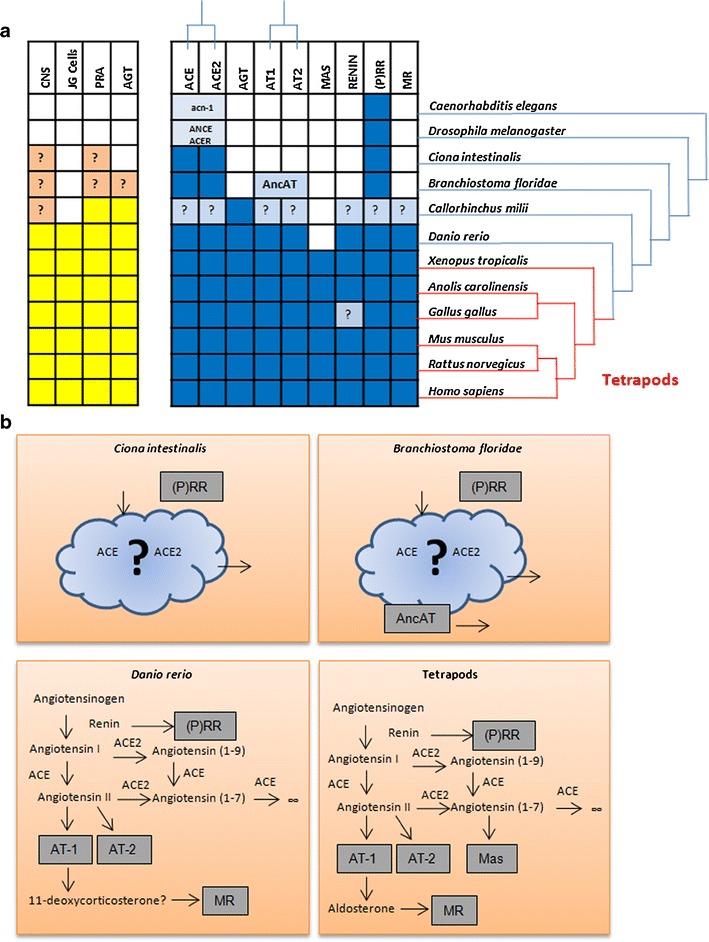Fig. 3.

Comparison of the RAAS in multiple species. a Left panel (yellow) includes data from physiological studies: presence known or supposed of RAAS in the central nervous system (CNS), juxtaglomerular cells (JGCells), plasma renin activity (PRA), and angiotensin or angiotensin-like activity known (AGT). Note that PRA does not measure renin, but rather the conversion of AGT to Ang I; renin is not the only enzyme with this capability. Right panel (blue) shows sequence data found by BLAST inquiry. Blanks indicate instances in which the property could not be found. Question marks denote instances of uncertain or contradictory data. b Model of the stepwise emergence of the components of the RAAS based on their conservation across several taxonomic divisions. Ciona intestinalis contains the two ACEs and the prorenin receptor, but the many components missing show evidence that these three proteins have functions ancestral to the RAAS. B. floridae has an additional member, AncAT, an ancestral version of the angiotensin receptors. After a large gap, our next closer relatives whose complete genomes we know, the bony fishes, have a human-like system, with two notable differences: a possible use of a precursor of aldosterone and the absence of the Mas receptor. The tetrapods (mammals, reptiles, amphibians, birds) have the complete system, with the exception of renin, which could be missing in aves (see main text)
